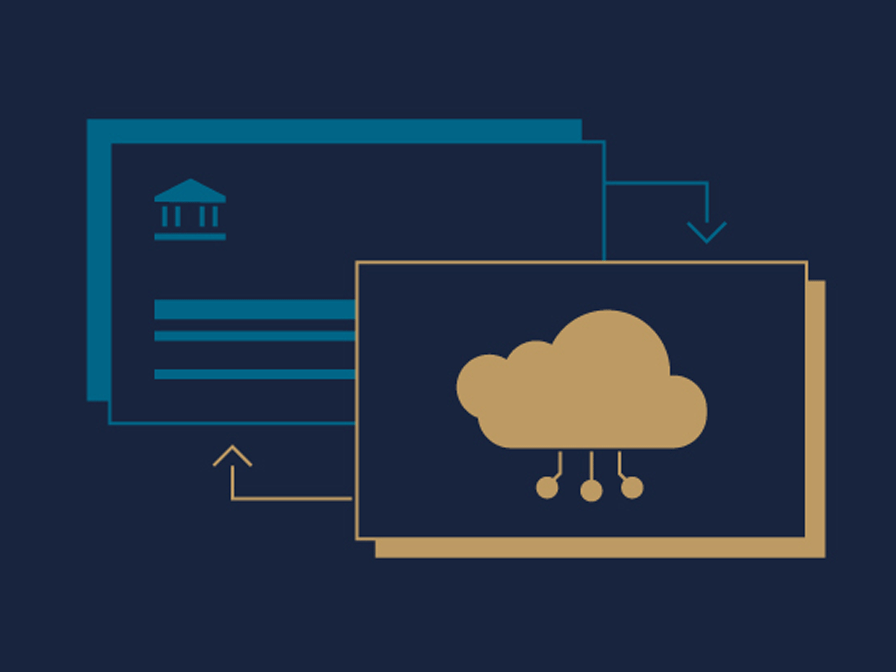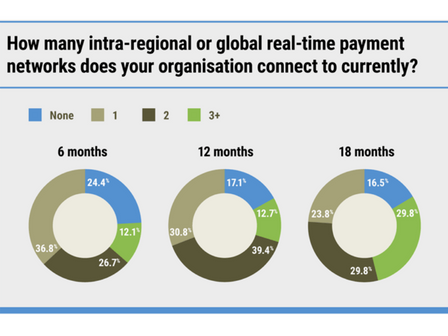
This is the first blog in a two-part series focused on Payments as a Service (PaaS). This initial post focuses on the evolution of PaaS and its revolutionary impact on financial transactions. Our second post will focus on navigating the challenges and opportunities of PaaS adoption in global commercial payments.
Payments as a Service (PaaS) didn’t emerge in isolation—it builds on decades of advancements in payment systems, from in-house solutions to modern, cloud-native platforms. It represents the latest evolution in the payments space, offering a streamlined, scalable, and highly efficient way for financial businesses to manage their transactions. This cloud-based approach transforms how institutions handle payment processing, addressing long-standing industry challenges.
From in-house systems to cloud-native platforms
Payments processing has progressed significantly since its start. Initially, payment systems were handled by in-house software solutions, designed for specific transactions like credit card payments or bank transfers. These on-premises systems often operated in isolation, lacking integration and interoperability across different payment types.
As the need for more comprehensive solutions grew, Application Service Providers (ASPs) emerged. ASPs offered hosted software solutions that allowed businesses to manage multiple payment types through a centralized platform. The ASP model still faced limitations in scalability and adaptability to new technologies.
Payments as a Service (PaaS) incorporates the lessons learned from the past into a modern, secure, cloud-native, and scalable approach to payments. These solutions leverage advanced technologies such as artificial intelligence, machine learning, and blockchain to provide enhanced security, real-time processing, and greater flexibility. The shift towards microservices-based architectures has made PaaS platforms inherently more scalable and cost-effective, marking a significant leap forward from the earlier in-house and ASP models.
Key advantages driving PaaS adoption
Key Advantages Driving PaaS Adoption
- Enhanced efficiency and scalability: PaaS offers a streamlined, cloud-based solution that simplifies payment processes and reduces operational costs. It allows businesses to quickly integrate new payment methods and currencies, accommodating the growing demand for global commerce without the burden of managing multiple systems.
- Improved security and compliance: Cybersecurity and regulatory compliance stakes are at an all-time high. Cyberattack incidents cost an average of $4.45 million, while regulatory fines increased 31% in early 2024. PaaS platforms are supported by advanced security features and compliance tools. These capabilities are especially valuable for institutions operating in multiple jurisdictions with diverse regulatory landscape
- Better user experiences: In today’s digital age, corporate clients and end consumers expect seamless, real-time payment experiences. In fact, the data suggest that, when available, instant payments are a preferred method of payment with 92% of businesses reporting the use of faster or instant payments in 2023. PaaS enables institutions to offer intuitive and more convenient payment experiences.
The integration of PaaS and ISO 20022
The adoption of ISO 20022, a global standard for electronic data interchange between financial institutions, further enhances the value PaaS delivers. ISO 20022 allows for more detailed and structured data in financial messages, enabling better transparency, compliance, and efficiency.
For example, in the healthcare industry, which heavily relies on checks for reimbursements, the adoption of ISO 20022 coupled with real-time payments addresses key concerns. It enables the secure and efficient digital transmission of full remittance information, aligning with stringent privacy laws. Similarly, in wealth management, firms like Azqore are leveraging PaaS solutions to deliver SEPA instant payments and modernize messaging infrastructure to take advantage of the ISO 20022 standard.
The interconnection of PaaS and Banking as a Service (BaaS)
PaaS is closely intertwined with Banking as a Service. The promise of BaaS cannot be delivered without PaaS, as almost every banking service involves a money transfer. When financial services and money transfers are integrated, user experience is significantly improved, giving institutions a competitive edge.
And, while BaaS provides a great amount of opportunity, it does have some challenges – in particular global differences in regulatory approaches. In the European Union, PSD2 requirements demand stringent data protection and security measures, while the U.S. faces unique challenges with its fragmented state-by-state regulatory framework. The Asia-Pacific region adds another layer of complexity with its diverse regulatory environments across countries. Financial institutions must also maintain robust anti-money-laundering (AML), know-your-customer (KYC), and combat the financing of terrorism (CFT) protocols, requiring comprehensive verification processes and continuous monitoring.
This is where PaaS proves particularly valuable, as it provides built-in compliance tools and security features specifically designed for multi-jurisdictional operations. PaaS platforms help institutions automate compliance checks, enhance security measures, and maintain clear audit trails across different regulatory environments. By leveraging PaaS solutions, institutions can more effectively manage the complexity of cross-border compliance while maintaining the transparency and documentation required by regulatory authorities.
Future trends and opportunities
Looking ahead, PaaS is expected to leverage artificial intelligence and machine learning. These technologies will enable more sophisticated fraud prevention mechanisms, personalized customer experiences, and predictive analytics for better financial planning and decision-making.
The growing adoption of the Internet of Things (IoT) will also drive demand for PaaS solutions that can manage micropayments and machine-to-machine transactions. This integration will facilitate seamless payments in smart cities, connected vehicles, and other IoT-enabled environments, further embedding PaaS into everyday corporate life.
Conclusion
Payments as a Service has evolved from a niche solution to a central player in the global financial ecosystem. By addressing long-standing industry challenges and leveraging cutting-edge technology, PaaS is not just improving existing processes – it’s revolutionizing how financial transactions are conducted. PaaS will play an increasingly crucial role in shaping the landscape of global finance, driving innovation, efficiency, and improved user experiences across the industry.
Stay tuned for our second installment, where we’ll explore the challenges and opportunities of PaaS adoption in global commercial payments.
For more on the evolution of Payments as a Service, download our whitepaper “Payments as a Service: A fast track to payments modernization” written in collaboration with Javelin Research.







